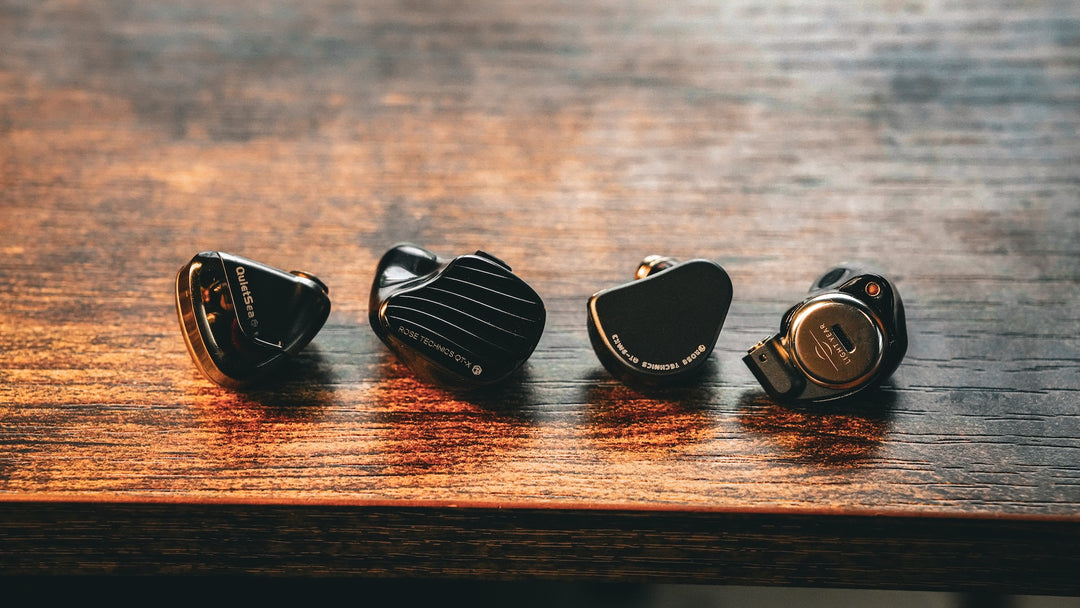The development of digital audio technology has gone through a number of stages to get to where we are now. Going back 30 or more years, early adopters of digital music found the sound to be sometimes grainy and brittle. Even as CDs became the best selling music format, the “loudness wars” heated up through the 90s and into the 2000s driving many audiophiles away from digital and back to vinyl. Now we’ve reached a point where high resolution digital has become the standard in HiFi audio, and it takes some of the best vinyl systems in the world to deliver sound that rivals digital systems that cost a fraction of their price.
Through all of this – for over 30 years – dCS has been at the forefront of digital audio, pushing the boundaries of the available technology to deliver some of the best DACs of each era. Now with the Lina, they hope to deliver a blend of accuracy, transparency, and musicality that earns its price tag. Is Lina up to the task of demonstrating the pinnacle of digital audio as potentially the best headphone system in the world?
Build and Design
The dCS Lina Stack comprises three components, the Lina DAC, Lina Amp, and Lina Master Clock. Each is available separately, but the underlying design intention is for all three to be integrated together. After getting everything unpacked, the recommended stacking order is amp on the bottom, Master Clock in the middle, and DAC on the top. No matter how you slice it up, this is quite the intimidating package, and will also require a bit more setup than your average DAC and amp.
The package for each includes a selection of regional power cables and an ethernet cable for the power link. You also get a pair of XLR cables with the amp, and BNC cables with the Master Clock. All of the provided cables are more workmanlike, with, I suppose, the expectation that you’ll want to upgrade the specific cables that you use.
The physical material design of the units is simple, but highly premium. There’s just a little extra thickness, and clear attention to detail in how each Lina component is assembled. The small touches – like the firmness of each jack, or the smooth feeling of the volume, add that extra bit of refinement that make Lina feel exquisitely premium.
Features and Interface
While the Lina Amp is pretty straightforward, there’s a fair amount of complexity to the rest of the dCS Lina stack. From the power linking setup, and the networking features of Lina DAC, to the almost mystical quality of the Lina Master Clock, getting everything plugged in is just the tip of the iceberg.
The principles behind the Master Clock relate to machine-level computer programming. When it comes to digital systems, any timing is based on the number of cycles the CPU performs, which can create small inconsistencies. While these differences aren’t big enough to pose a problem in most circumstances – even in competitive multiplayer games, factors like controller input lag would be much greater than the CPU clock timing inconsistency – this can make a difference in pro and HiFi audio performance as even very small inconsistencies in timing can make a big greatly impact dynamics and the sense of cohesion in music. Because of this, most high-end digital studio recording is done with dedicated hardware to serve as a unified clock source outside of the CPU. dCS Lina Master Clock is specifically designed to accomplish the same thing as a studio clock system, but for a HiFi audio listening environment. By integrating with the Lina DAC it can correct the smallest deviations in audio timing to deliver pristine sound.
The Lina DAC is also chock full of features from the basics, like Crossfeed and DAC Filter options that are configurable through the UI, to more advanced options, like Roon connectivity over LAN. In our testing, the network DAC feature worked perfectly, and it was easy to connect via the local network as via USB. While you can connect to Lina DAC from a device connected to the WiFi, the DAC itself needs to be plugged in via ethernet.
In my testing, I connected Lina to the network and then used a few supported apps (Spotify, Roon, and TIDAL) to connect and playback music. All three worked without a hitch, and provided excellent playback quality. As an added bonus, in network mode, Lina displays the full playback information (song title, length, and so on), while in USB or S/PDIF mode it only displays the bitrate. As someone who has fought a number of battles with various streamers, the simple, straightforward process of getting this connected was a real win.
Sound
While physically, it certainly takes up a bit of space on your desk, sonically, Lina simply feels like it’s not there at all. The Lina Amp, connected to the Lina DAC, with the Lina Master Clock, is the most transparent audio stack I’ve ever heard. It feels like plugging your headphones directly into the mixing console at the studio – in fact it probably sounds even better.
If there’s a detail in the song – no matter how small – Lina will deliver it to your headphones. From the subbass through the upper treble, the perception is perfectly natural and neutral. While there are many DACs that can provide a great deal of detail and excellent imaging, it often sounds just a little exaggerated: as if there’s a little bit of extra emphasis in one spot or another to bring out specific details. Lina gives you those same details, but while remaining more lifelike.
If there’s any suspicion that any aspects of the sound might not be absolutely transparent, it’s in the treble, where it can seem just the slightest bit smooth – like when there’s a visceral high note that should be just a little bit painful, the edge is smoothed out enough that it can’t hurt you. The midrange presentation is full, natural, and delivers beautifully layered detail. The bass is deep and linear, offering texture, dynamics, and clean extension.
The bass is also the biggest place I noticed the Master Clock doing it’s job, with a clear improvement in the impact and dynamics of the bass with the Master Clock active. The Master Clock also enhances the sense of separation between instruments and layers, providing better insight into the character of the individual instruments.
The imaging and soundstage are exceptional, offering a wide, deep, three dimensional stage, and highly accurate and tactile imaging. In addition to excellent spatial delivery, listening to a well recorded live album will frequently cause the “head turn effect.” That is, the imaging is so holographic and the soundstage so three dimensional that a voice or noise from the crowd feels like something actually happening somewhere off behind the listener, causing you to instinctively turn your head and look for it – and feel a little bit foolish a moment later.
Being so transparent means that you get to really dig into the character of the headphones you’re using with Lina. Revealing headphones like the Utopia 2020 use the incredible level of detail provided to reveal even more, while the Meze Empyrean seems to be able to wrangle that much more warmth and emotion from the original signal than it was before.
At first, I was skeptical of Lina’s ability to drive some more challenging headphones, but the ability to increase the output gain from Lina DAC allowed it to drive the harder end of the spectrum with ease, in spite of the 2W rating. For IEMs, make sure you turn the DAC output gain back down, and you’ll get a nice black background on all but the most sensitive earphones.
Comparison: Weiss DAC502, Chord TT2 + M Scaler
Because of the nature of the complete stack, it’s tough to make simple direct comparisons. While not 100% apples to apples, we brought out the Chord TT2 + M Scaler and Weiss DAC502 to compare some impressions. The final result was not entirely surprising, but really highlighted what dCS has accomplished with the Lina.
In terms of the build and design, each Lina component is clearly built to a very high standard, using high quality materials, and at its heart, it’s very straightforward to use and set up. DAC502 has a similar build, but doesn’t feel quite as robust as Lina. Chord boasts excellent build quality, but no matter how many times I set up this particular stack, I still end up checking the manual to make sure I’m hitting the right buttons, and that all the lights are the right color.
When it comes to the actual features, there are a couple layers here, just separating out the Lina DAC gets you essentially all the features (minus an actual headphone out) along with a price point that hits a lot closer to the comparisons. In this department, Weiss DAC502 absolutely shines, with an array of complex filters, EQ options, and a blend of settings for both 2-channel systems and headphone use. What it (and Chord TT2) lacks is a network DAC function that allows you to stream directly with Roon or another similar service. In general, TT2 + M Scaler ends up being fairly minimalist when it comes to features outside of the upscaling and basic DAC filters.
The sound is where Lina really sets itself apart. Particularly with the Lina Master Clock, it’s almost as if Lina combines the best aspects of TT2 and DAC502 into one system. You get the fine detail and spaciousness of TT2 + M Scaler, along with the more organic presentation, weightier feeling imaging of DAC502. It gives you dynamics, detail, and imaging that exceeds both with a highly musical feeling delivery that demonstrates the heights that Lina can really reach.
Considering the price, you definitely have some options for trying out different amps to try to get the Chord stack or DAC502 to match up with Lina’s performance. The TT2 + M Scaler + Feliks Euforia EVO adds some of the additional weight to the sound that DAC502 and Lina have, while the Euforia EVO with the DAC502 will send you into more lush feeling territory. DAC502 with the Burson Soloist 3X GT takes it in a whole new direction, offering a combination of a vintage feeling, with a digital high resolution edge. But nothing we tried quite matches the simple balance of realism and transparency that Lina stack delivers.
The Bottom Line
Quantifying exactly how much transparency a device provides can be quite the challenge, since transparency isn’t something so much as it’s nothing, and one problem with some of the very best audio components is that they have a very peculiar effect – by virtue of being highly neutral, lifelike, and clear – it’s hard to fully appreciate how good they are except by comparison. The dCS Lina stack presents this exact problem. It simply sounds “right,” and not just right: nearly perfect. dCS’s slogan is “Only the Music,” and the Lina Stack takes this as a mission statement, giving you a perfectly clear window directly into the studio or onto the stage, to give the listener “only the music” exactly as it was intended.









